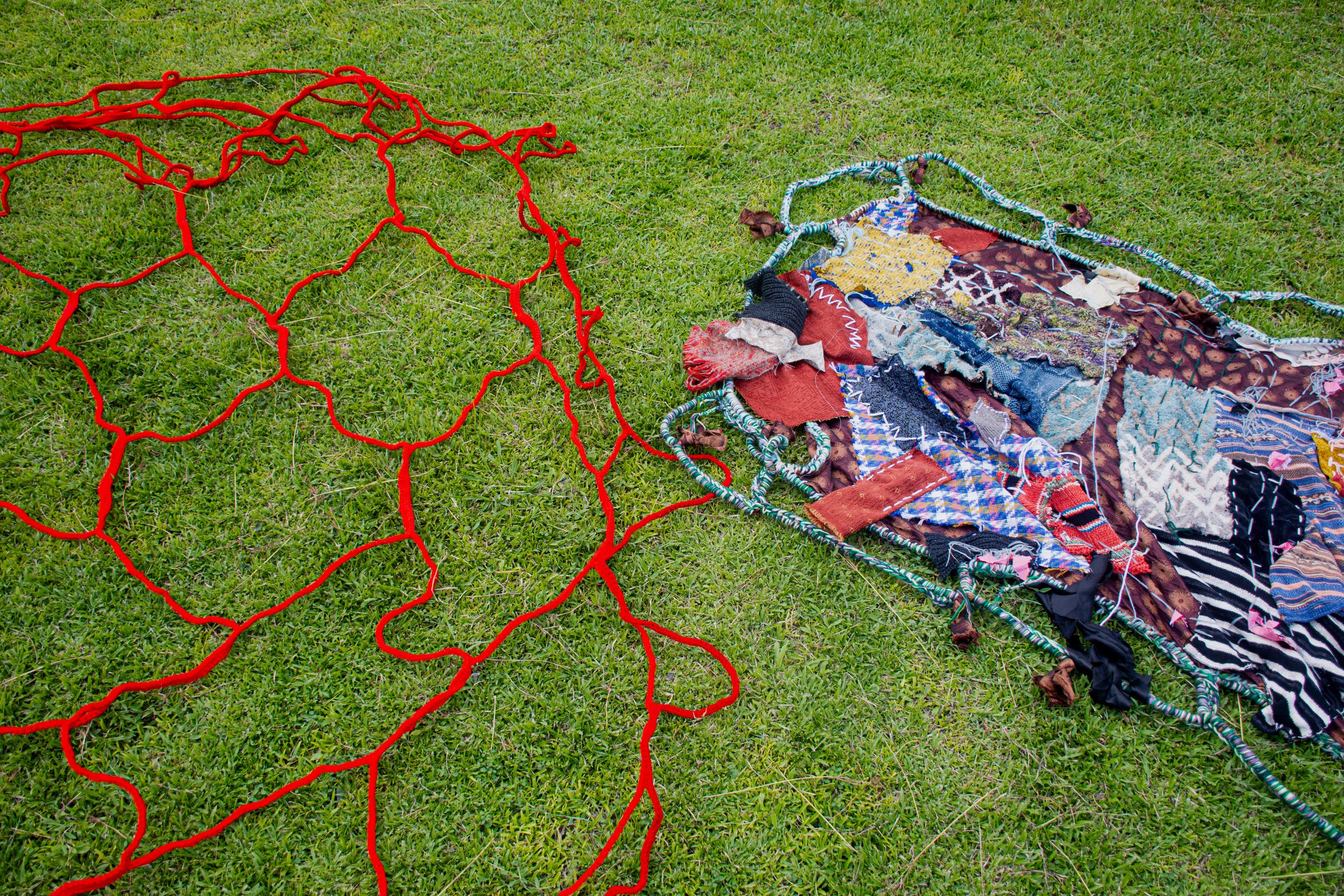Materiality / Immateriality: Exhibitions in July 2024
Words Amanda Juico Dela Cruz
July 23, 2024
Portraits_The 20Storyteller
The artists featured this month meditate on and mediate between the materiality and immateriality of their works and artistic preoccupations. Tosh Basco, Eisa Jocson, Maricar Tolentino, and Genavee Lazaro turn to the materiality of the body and the immateriality of the self. Yasue Maetake and Citra Sasmita implore the spiritual and the divine in the universe. Wai Kin Sin and Min Wong test the possibilities of theatricality. Geraldine Javier, Ged Unson, and Aze Ong emphasize the characteristics of fabric. Leslie De Chavez and Jonathan Madeja protest against the status quo.
“Soft Fantasy / Hard Reality” by Tosh Basco, Geraldine Javier, Eisa Jocson, Yasue Maetake, Citra Sasmita, Wai Kin Sin, and Ming Wong at Silverlens Galleries
The exhibition navigates sets of binaries: First with softness / hardness and with fantasy / reality. It then extends to related sets of binaries: immateriality / materiality, fictive / factual, and concept / form. The group exhibition explores not only these polarities, but the in-betweens as well through paintings, sculpture, installation, moving image, and performance. Tosh Basco and Eisa Jocson resort to their bodies in acting out their art. Yasue Maetake’s and Citra Sasmita’s works are informed by animism, cosmology, and mythology. Geraldine Javier plays with textile. Ming Wong and Sin Kai Win are interested in the theatrical and performative.
“Portals” by Ged Unson Merino and Aze Ong Ramirez at Ateneo Art Gallery
Experimental. The installation is a fabric canopy composed of different fiber and fabric textures and patterns, as well as different techniques of crochet, sewing, embroidery, knitting, and knotting that hold the pieces together. Holes allow the audience to focus on the sunlight coming from the sky. Ephemeral. Situated outdoors, the installation is vulnerable to rain and to sun, to wind and dust. Inevitably, the condition of the textile will change by the end of the exhibition. Interactive. The project allows the audience to contribute crochet works that will eventually be sewn into the installation, emphasizing the nature of the material.
“Pasilip” by Maricar Tolentino at Gravity Art Space
“Pasilip” is to allow one to peek into something or to plead the owner for their permission. Maricar Tolentino displayed her works for us to take a closer look, but the sense of personal space evoked could feel as if the audience is the one asking for the artist’s permission to roam around the exhibition space. In the middle is a mosquito net with embroidery works of naked female figures. In another work encased and placed on the wall are embroidery works of domestic objects—knives, hangers, scissors, cutters, and religious icons—turned weapons when seen with a feminist lens.
“As Judas received the bread from Christ a small black devil is shown entering his mouth” by Leslie De Chavez at MO_Space
“…one of you is going to betray me,” Jesus said during His last supper. When asked who, Jesus replied “…the one to whom I will give this piece of bread…” Jesus gave it to Judas. Judas took it. Scenes from the life of the Son of God fill the space. In one work, Jesus is seen tied to a post. In another, the child Christ stands on His mother’s lap. Accompanying these scenes are images: a fragment of a Picasso purchased with government funds, a young woman in a baro’t saya, a couple with dwarfism condition holding a German Shepperd.
Avee (artist & artwork)
“The Perspective Machine” by Genavee Lazaro at White Walls Gallery
The Cactus Friends are back. Created by Genavee Lazaro, these whimsical characters take the center stage in portraying the artist’s journey of resilience and triumph. In “10 Vases of Growth,” on top of elongated vases in varying heights and arrangements are cacti characters in different yoga poses. In “Line Up,” a cactus is seen readying itself to ride the waves, offering a new perspective on sunset watching. In “Learning Sensuality,” a cactus is caught in a sensual pose while pole dancing. Amidst the discomfort brought by going out of one’s comfort zone, this series of stoneware works feature blooming flowers.
“Tabing Dagat” by Jonathan Madeja at Altro Mondo
Jonathan Madeja doesn’t only go back to his roots living by the sea in Alad Island in Romblon. He goes beyond his self, telling the tales of his kin of fisherfolks and how living by the sea makes people become one with the waters. Companion pieces “Hanap” and “Buhay” depict human and fish at the core of each other as if their lives are deeply intertwined. In “Layag,” the sail has a sun and three stars reminiscent of the Philippine flag. In another work called “Sabaw,” a fin of a shark emerges from a bowl intricately ornated with a dragon.







